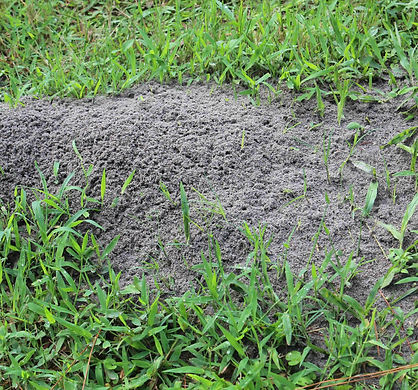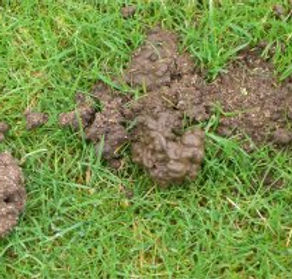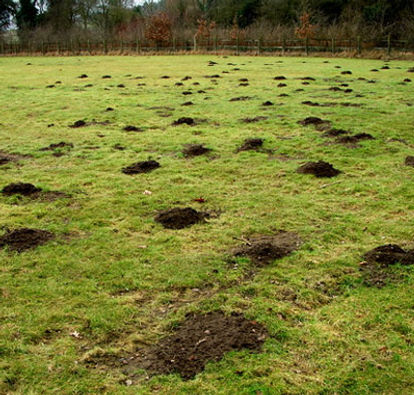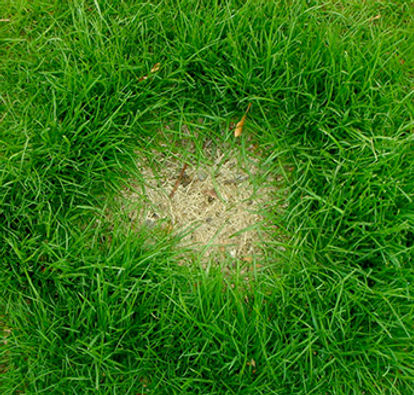
LAWN PESTS

Ants
Ants are one of the most common insect problems we are asked to treat. The mounds of soil that the ant colonies create, produce uneven spots in the lawn. When these uneven spots are cut, most of the grass plant is removed with it, creating areas for weeds or moss to grow.
The mounds of fine earth should be allowed to dry out and then brushed vigorously with a heavy bristled brush to sweep the soil particles level across the lawn. An ant treatment will be much more effective if you use a trowel to dig ¾ inches into the nest and apply the ant powder deep into it, then covering over with the soil. This method will be more effective than puffing the ant powder onto the grass where it will usually just scorch the grass. A new queen ant may move into the treated ant nest and start a new colony. Tolerance and aggressive brushing is the best option.
Alternatively if you have serious problems contact us at Expert Lawn Care and we can advise or treat your problems.

Leather jackets
Between July and September Crane fly, commonly known as ‘Daddy long legs’, lay hundreds of eggs in lawns across the country. The eggs hatch between late autumn and early spring with a maggot like Leather Jacket larvae emerging and feeding on the grass roots and shoots.
Grass less than five years old is particularly susceptible as the roots remain succulent and easy to digest by the larvae. Low winter temperatures and frosts usually control numbers but the mild damp winters experienced in recent years have not had the desired effect.
Leather Jackets can strip large areas of a lawn in a few days. Signs of a Leather Jacket infestation are:
-
Bare patches
-
Dead or dying straw like grass appearing in your lawn
-
Birds pecking at the lawn pulling thatch out of the lawn
If you have these problems, contact us at Expert Lawn Care.

Garden Chafer Grub
With its prawn like appearance the white grey plump larvae of the chafer beetle can seriously damage the root system of a lawn. Damage is usually noticeable in the late summer/autumn. In severe cases where the roots of the turf has been eaten through and badly damaged you will be able lift your turf off the soil surface by hand.
If you notice patches of lawn browning and dying and large numbers of birds pecking your lawn, then you probably have an insect problem. Please act quickly and contact us at Expert Lawn Care as delays will result in increased damage. Our treatments are quick and effective.

Worm casts
Worms in general are to be encouraged in your garden, as their burrowing helps to aerate the soil. Worms also feed on and recycle decaying vegetable matter. However, a few species deposit their muddy waste on the soil surface and in wet weather it can smear when trodden on or when you mow the grass. The smear marks are unsightly and can act as ideal spots for weeds to germinate.
At Expert Lawn Care, we have a range of products that encourages the earthworm to dig down deeper into the soil and reduce the casts on your lawn. Our treatment is economic and effective and will keep your lawn looking clean and prevent smears.

Moles
Moles invade lawns and gardens in search of food. They do not damage lawns for fun, their intention is to create a set of tunnels to trap worms. Moles dislike noise and vibration and strong smells. Moth balls have been recommended but we have mixed reports about their efficiency.
We can treat your lawn to encourage the worms, the mole’s food source - to borrow deeper and avoid the tunnels. Without a regular supply of worms for food hopefully the moles moves away to hunt for food elsewhere. Traps and poisons are not the answer but profitable for the mole catcher. If you kill one mole in our experience another one replaces it until the food source is gone!

Urine scorch marks
Animal urine particularly from female dogs and even foxes can cause the grass to turn brown and die. Irrigation to reduce the effect of the urine will help.
Dog rocks is a specialist product that is dropped in your dog’s water and has produced many positive results. Alternatively, try to encourage your pet to use a specific area and replace the turf each month.
